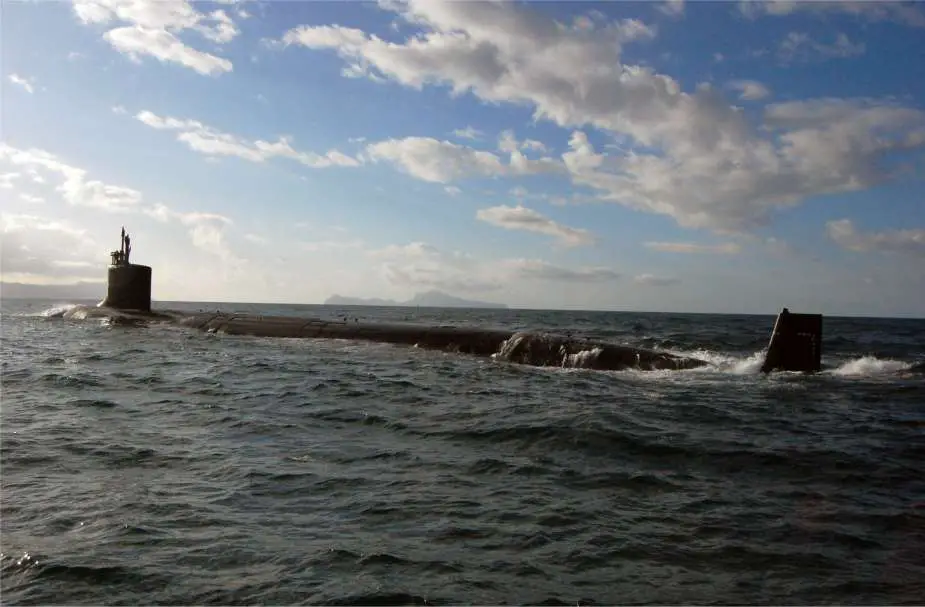Breaking news
US Navy to build underwater hypersonic missile testing facility.
As reported by Nikkei Asia on March 17, 2024, the US Navy announced its intention to build an underwater testing facility dedicated to hypersonic missiles. This plan aims to facilitate the integration of hypersonic missile systems into the forthcoming Block V variant of the Virginia-class fast-attack submarines, with expectations for these submarines to be operational in the early 2030s. The information was provided by Vice Adm. Johnny Wolfe, who serves as the director of the Navy's strategic systems programs, during his testimony before Congress.
Follow Navy Recognition on Google News at this link
 The Virginia-class, identified as the SSN-774 class, is the latest series of nuclear-powered cruise missile fast-attack submarines utilized by the US Navy. (Picture source: US Navy)
The Virginia-class, identified as the SSN-774 class, is the latest series of nuclear-powered cruise missile fast-attack submarines utilized by the US Navy. (Picture source: US Navy)
The Virginia-class, identified as the SSN-774 class, is the latest series of nuclear-powered cruise missile fast-attack submarines utilized by the US Navy. These vessels have been designed and constructed by General Dynamics Electric Boat and Huntington Ingalls Industries. They are configured to perform in various mission scenarios, including operations in the open ocean and littoral (nearshore) areas. Their primary roles encompass anti-submarine warfare and intelligence collection. The Virginia-class submarines are set to replace the older Los Angeles-class submarines, with the new class expected to enter service incrementally until 2043, thus ensuring their operational presence into at least the 2070s.
The forthcoming Block V submarines will exhibit several enhancements, including a length increase to 460 feet from the current 377 feet and a maintained beam of 34 feet. Their displacement is expected to reach 10,200 long tons, up from the previous 7,800 long tons. Designed to accommodate diverse payloads, the Virginia-clas submarines carry 40 weapons and are equipped to support special operations forces and unmanned undersea vehicles. The propulsion of these vessels is provided by an S9G nuclear reactor, which produces 40,000 shaft horsepower and enables the submarines to achieve speeds exceeding 25 knots and dive to depths well beyond the standard 800 feet, reportedly close to 1,600 feet.
The Block V versions are particularly noted for incorporating the Virginia Payload Module (VPM), an addition aimed at expanding the missile capacity of the submarines. This enhancement is in anticipation of the retirement of the Ohio-class submarines converted for guided missile use. The VPM will allow for the storage of additional large-diameter tubes capable of housing seven Tomahawk cruise missiles each, significantly increasing the overall armament capacity from about 37 to roughly 65 torpedo-sized weapons. With an estimated cost of $1.8 billion each, the Block V submarines are considered to offer a more cost-effective solution compared to the earlier Seawolf-class.
The development of the Block V submarines and the integration of hypersonic missile systems are responses to the growing military capabilities observed in China, especially in terms of naval strength and missile technology. The expansion of China's shipbuilding activities, enhancement of its conventional and nuclear arsenals, and territorial ambitions in the Indo-Pacific region have highlighted a disparity in missile capabilities, especially in the range of intermediate-range missiles, from which the United States had previously refrained under the Intermediate-Range Nuclear Forces Treaty, a treaty not applicable to China.
Hypersonic missiles, capable of speeds exceeding Mach 5, aim to provide the US Navy with the ability to rapidly engage targets over long distances and address the existing missile gap between the United States and China. These missiles are characterized by their high-speed travel combined with maneuverability, and they are planned for non-nuclear use.
The development and testing of these missiles will be conducted at the new facility planned at the Naval Surface Warfare Center in Crane, Indiana. This location is selected for the essential submerged tests required to understand the underwater launch dynamics of these missiles. The submarine-launched hypersonic missiles will need to employ a "cold launch" system, as opposed to the traditional "hot launch" methods used for terrestrial systems, introducing specific technical challenges.
However, the strategic utility and cost-effectiveness of submarine-launched hypersonic missiles are subjects of debate. While some view the development as a necessary response to advancements by other nations, critics like Jennifer Kavanagh from the Carnegie Endowment for International Peace question the substantial investment required, suggesting that the incremental benefits of hypersonic capabilities may not justify their high development costs.
The pursuit of hypersonic technologies is not unique to the United States; other nations such as China and Russia are also advancing their own hypersonic capabilities. Jeffrey McCormick, a senior intelligence analyst, notes that China is progressing rapidly in both the development infrastructure and inventory of hypersonic systems, surpassing Russia, which has been involved in hypersonic research since the 1980s and has fielded systems like the air-launched Kinzhal.


























